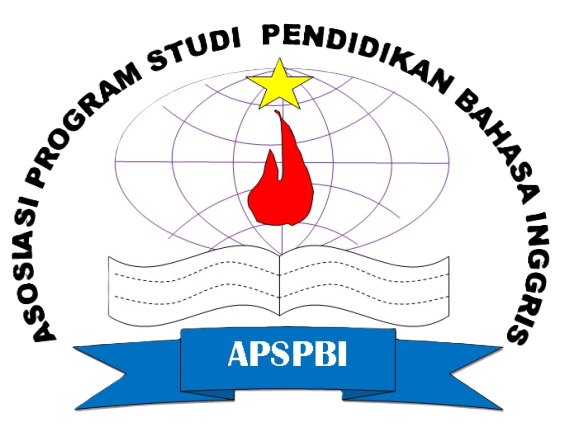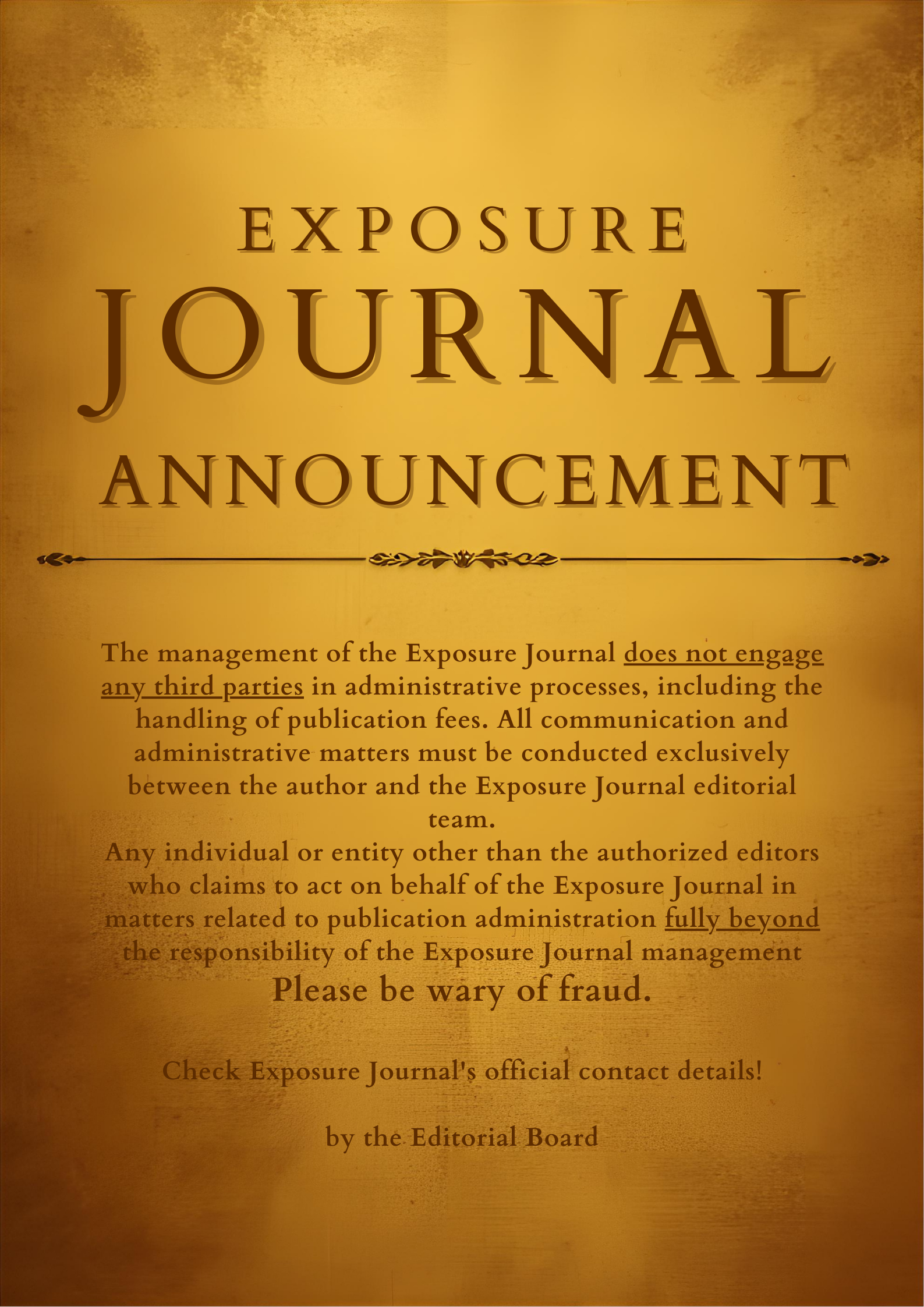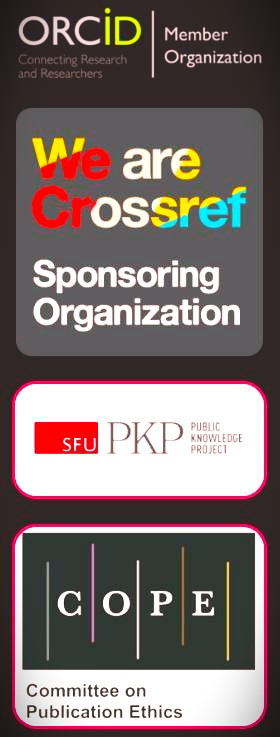IMPROVING STUDENTS’ SPEAKING ABILITY BY USING SYNCHRONOUS COMMUNICATION STRATEGY
DOI: https://doi.org/10.26618/exposure.v5i2.844
Abstract
The objective of the research was to find out the improvement students’ speaking ability by using Synchronous Communication strategy at the second grade of SMA 1 Mappakasunggu. This research used Classroom Action Research that consisted two cycles. The research population was the second grade of SMA 1 Mappakasunggu academic year 2014/2015. The sample of this research consisted of 27 students. The researcher obtained the data by using speaking test and observation sheet. The findings of the student's speaking test in cycle I and cycle II had significantly different scores. There was a better increase of gains by students at the end of action of the second cycle. The research findings indicated that the application of Synchronous Communication strategy was significant in improving the students’ speaking ability of accuracy which focused on vocabulary and fluency which focused on self-confidence. It was proved by the mean score of diagnostic test was 4.5 that classified poor, the improving in cycle 1 was 6 that classified fair and cycle 2 was 7 that classified good. It means that there was the improvement of the students’ speaking ability in SMAN 1 Mappakasunggu.
Keywords: Speaking Ability, Synchronous Communication Strategy
References
Bill Brandon. 2008 144 Tips on Synchronous e-Learning Strategy + Research. www.elearningguild.com.
Ellis, R. (1996). The Study of Second Language Acquisition. Oxford: Oxford University Press.
Fotos, S. 1998. Shifting the Focus from Forms to Form in the ELT Classroom. ELT Journal, 52(4), 605-628.
Gay, L.R, 1981. Educational Research; Competencies for Analysis and Applications. Columbus: Charcks, E. Merril Publishing Co.
Hamka.2011. Improving Students’ Speaking Proficiency Through Case Presentation Method At Class XI Ipa1 Of Sma Negeri 9 Makassar (A Classroom Action Research) Retrieved from August 2012. FKIP University of Muhammadiyah Makassar.
Harmer, J., 1991. The Practice of English Language Teaching. London and New York Longman Group
Hedge, T. (2000). Teaching and Learning in the Language Classroom. Oxford University Press.
Herminingsih,D.I,2009. Forms-Focused and Meaning-Focused Istruction Model to Promote Speaking Ability in English Class. Dinamika Volume 9, (7778).Retrievedfromhttp://www.googlr.co.id/isjd.pdii.lipi.go.id/admin/jurnal/91097686.pdf [0n 21 July 2012 ]
Hornby. A.S. 1974. Oxford Advanced Learner's Dictionary of Current English. Third Edition. New York: Oxford University Press.
Krashen, S. D., & Terrell, T. D. 1998. The natural approach: Language acquisition in the classroom. Prentice Hall International.
Larsen – Freeman, D. 1987. Techniques and Principles in Language Teaching. Oxford: Oxford University.
Larsen-Freeman, D. 2001. Techniques and principles in language teaching (2nd Ed.). Oxford: Oxford University Press.
Lightbown, P., & Spada, N. 1990. Focus-on-form and corrective feedback in communicative language teaching: Effects on second language learning. Studies in Second Language Acquisition, 12, 429-448.
Lightbown, P., & Spada, N. 1999. How languages are learned. Oxford: Oxford University Press.
Long, H. L. 1983 Does second language instruction make a difference? A review of Research. TESOL Quarterly 17: (3) 359-382
Long, M. 1991. Focus on form: A design feature in language teaching methodology.
Long, M., & Robinson, P. 1998. Focus on form: Theory, research, and practice. In C. Doughty and J. Williams (Eds.). Focus on form in classroom second language acquisition. Cambridge: Cambridge University Press.
Long, M.H. 1981 Input, Interaction, and Second Language Acquisition. In Winitz, S. (Ed.) Native Language and Foreign Language Acquisition. New
York. New York Academy of Science.
Macías Diego Fernando. 2011. Towards The Use of Focus On Form Instruction In Foreign Language Learning And Teaching In Colombia. Íkala vol.16 no.29 Medellín. Retrieved From http://aprendeenlinea.udea.edu.com on 22 July 2012
Nishimura, K. 2000. Effective ways of communicative instruction in the Japanese EFL classroom: Balancing fluency and accuracy. Retrieved From http://www.eric.ed.gov/ERICWebPortal/search/detailmini on 21 July 2012
Nunan, D. (1998). Teaching Grammar in Context. ELT journal, 52, 101-109.
Office of information technology OIT. 2010 When, Why, and How to Use Synchronous vs. Asynchronous Communication.
Seedhouse, P. 1997. Combing form and meaning. ELT Journal, 51(4), 336-344.Retrieved from http://eltj.oxfordjournals.org/content/51/4/336.short on 23 July 2012.
Sixia Gao. 2009. Focus on Form in College English Teaching. English language teaching volume 2 (46-48). Retrieved from www.ccsenet.org/journal.Html
Tom Worthington.2013 Synchronizing Asynchronous Learning Combining Synchronous and Asynchronous Techniques Australian National University Canberra, Australia
Wallace, C. 1988. Action Research for Teacher. Cambridge: Cambridge University Press.
Widdowson, H. G. 1979. Teaching language as a communication. Oxford: Oxford University press.
Downloads
Published
How to Cite
Issue
Section
License
Authors who publish with this journal agree to the following terms:
In order to assure the highest standards for published articles, a peer review policy is applied. In pursue of the compliance with academic standards, all parties involved in the publishing process (the authors, the editors and the editorial board and the reviewers) agree to meet the responsibilities stated below in accordance to the Journal publication ethics and malpractice statement.
Duties of Authors:
- The author(s) warrant that the submitted article is an original work, which has not been previously published, and that they have obtained an agreement from any co-author(s) prior to the manuscript’s submission;
- The author(s) should not submit articles describing essentially the same research to more than one journal;
- The authors(s) make certain that the manuscript meets the terms of the Manuscript Submission Guideline regarding appropriate academic citation and that no copyright infringement occurs;
- The authors(s) should inform the editors about any conflict of interests and report any errors they subsequently, discover in their manuscript.
Duties of Editors and the Editorial Board:
- The editors, together with the editorial board, are responsible for deciding upon the publication or rejection of the submitted manuscripts based only on their originality, significance, and relevance to the domains of the journal;
- The editors evaluate the manuscripts compliance with academic criteria, the domains of the journal and the guidelines;
- The editors must at all times respect the confidentiality of any information pertaining to the submitted manuscripts;
- The editors assign the review of each manuscript to two reviewers chosen according to their domains of expertise. The editors must take into account any conflict of interest reported by the authors and the reviewers.
- The editors must ensure that the comments and recommendations of the reviewers are sent to the author(s) in due time and that the manuscripts are returned to the editors, who take the final decision to publish them or not.
Authors are permitted and encouraged to post online a pre-publication manuscript (but not the Publisher’s final formatted PDF version of the Work) in institutional repositories or on their Websites prior to and during the submission process, as it can lead to productive exchanges, as well as earlier and greater citation of published work (see The Effect of Open Access). Any such posting made before acceptance and publication of the Work shall be updated upon publication to include a reference to the Publisher-assigned DOI (Digital Object Identifier) and a link to the online abstract for the final published Work in the Journal.














